As a company, Nintendo has a history of innovation – both good and bad. Their consoles have been trying new things since long before it was ever popular to be the odd one out (VirtualBoy), and they’re still doing it right up to this very moment. One of their latest innovations is ARMS; a fighting game where your arms are basically springy noodles and you’ve got to reach for your opponent. That sounds like a crazy, gimmicky mess – right? Well the joke’s on you, ’cause this “crazy, gimmicky mess” is more fun than a whole bin of fireworks.
A ten hour or more veteran of the global testpunch, it’s safe to say that I went into ARMS with at least some pre-determined knowledge and skill; able to take on Grand Prix level four with ease, and earn my right to play ranked pretty much right off the hop. I combo-ed, tossed, rushed, and dodged my way through eleven fighters to get that role, and it was glorious. Not all of you will be testpunch players however, so I think for the sake of clarity I’ll back up just a bit.
As I’ve said already, ARMS is a fighting game where your arms are pretty much just springy noodles – all the fighters you can choose from having been born with this unique physique (in one way or another). In a fight, you’ll take the stage behind whatever of the ten fighters you so choose to play as, pick a set of two arms from your available options, and then the magic begins.
With the motion control setup, you’ll have one Joy-Con in each hand and be ready to go with what they call the “thumbs up” position – which is exactly what it sounds like. Holding the controller like a roll of quarters you’re taking to a fist fight, you’ll hover your thumbs over the game’s main buttons; the triggers. The L trigger lets you do a short dash, the R trigger has you jump, and the ZR trigger initiates your special attack. Face buttons (like A, B, X, and Y) are only used for changing focus when multiple enemies are on screen, and the rest is all motion control. You’ll be leaning the controllers forward to advance, sideways to dodge or circle, and back to retreat – with punches coming from extending your arm like a real punch. There are grabs (initiated via a two hand simultaneous extend), and you can even curve your punches – depending on the type of arm used – by turning your hand. Finally, you can block by turning both controllers inward towards each other.
Alternatively, you can also play in a non-motion controller manner as well. In this setup you dash with the left face button, jump with the top face button, and unleash your rush (special) attack with the R trigger. You move with the left analog, guard by clicking in the left analog, and change targets with up on the direction buttons (or D-Pad). Punching is done with the bottom and right face buttons (left and right arms), while grabbing requires you to hit both at the same time. The single Joy-Con gameplay method simplifies this further, making rush (special) the SR trigger and change target the ZL trigger – keeping all the other buttons the same.
Whatever way you play however, a few things will always be the same. Heavier arms will always punch through lighter arms, lighter arms will always be more quick and maneuverable, and elemental attacks (which can be charged by holding the jump and/or dash buttons) will leave a lasting effect on your opponent. Things get more complex from there, as each fighter has their own unique movement and abilities, but the base rules always stay the same for how your arms work. Learn, and use them to your advantage – or you’ll have a hard time getting a grip on a win.
All that said and done, and with your control method of choice settled and your controller(s) in hand, you’ll have a few modes to choose from in order to get playing. First up in the non-online modes, there’s Grand Prix; a ladder of progressively stronger fighters you must climb in order to be crowned champion (of this arcade-like mode). There are seven different difficulty levels for the Grand Prix ladders – and while those under level four will only have ten opponents, level four and higher will have a surprise eleventh opponent to take on. All Grand Prix events are run by a witty commentator named Biff, and he’ll run you through the ladder with short descriptions and commentary breaks between each fight. It’s basic Michael Buffer fare, only with a cute little character that’s a little more handy than that of someone that simply sounds good saying “let’s get ready to rumble.”
Then there’s the Versus modes, which come in Fight, Team Fight, V-Ball, Hoops, Skillshot, and 1-on-100 varieties. ARMS Test and Training are lumped in there as well, though they’re not so much play as “test” modes. Fight and Team Fight play out very much as expected from their names, giving you (or you and a possibly CPU friend) a chance to punch an opponent or two’s lights out. V-Ball is like a volleyball version of hot potato with extendable arms, while Hoops is all about grabbing (or rushing) your opponent such that they’re tossed into a basketball hoop. Skillshot is a target practice style game, while 1-on-100 is exactly as it sounds – a timed run of you versus a hundred opponents. ARMS Test and Training will allow you to figure out your abilities in a relatively safe place, but aren’t really anything like fighting a real opponent.
Online modes extend to Party Match (a non-ranked roll of Versus modes online), Ranked Match (one-on-one ranked play), Friends, and Local gameplay – with all of these modes available from the get go… aside from Ranked Match. To unlock ranked play you’ll need to complete Grand Prix level 4, so that’s where I recommend you go once you’ve gotten used to the controls.
Pretty much all game modes (aside from those “test” types) will include the appearance of items, with matches where you can incur damage usually including the HP juice item at the least. The rush juice item will full your rush gauge, so watch for that in modes where your special attack can come into play as well.
Not all items are good however, and some items will hurt you if you’re too close when they’ve been touched. Fire bombs and shock bombs must be touched to be set off, and have a timer attached as to not be instant. That said, getting hit with them is not pleasant – so keep your distance unless you’re hitting it towards you opponent.
Aside from the gameplay modes, the main menu is pretty sparse; the only other notables being the help menu, and the “Set ARMS” and “Get ARMS” menus. Help is obviously where you go to get assistance, and will teach you everything from the basic controls to trivia and cool tidbits from the ARMS universe. The Set ARMS menu will allow you to look through and swap in new arms for your fighters (provided you’ve unlocked them of course), while the Get ARMS menu is a target mini-game that will cost you thirty currency points to play – and may end up netting you additional arms for your fighter.
All of this seems very simple to comprehend once you’ve given it a bit of a go and explored your options, and that’s one of the things that makes ARMS great. It’s simply one of those games that even a non-gamer would be able to pick up, play, and figure out to reasonable extent. You might not get a rush-blocking, fist-throwing madman out of them – but I think even granny or little Timmy could get some punches in if given a chance.
For those of us that want to dive deeper than an adrenaline rush surface encounter however, will also have room to grow – with techniques, arm combinations, and a healthy set of unique fighters (with their own special abilities) to explore and learn to use. Ranked Mode will allow fighters to grow through interaction with other opponents and styles, while single player and non-ranked modes will give the casual player somewhere to have fun (or work on getting good enough to not be so casual).
As for the matter of the ultimate amount of possibilities here, I think ARMS is truly a deep well – though there’s not an over-abundance of actual content. With thirty different arms, ten different characters, and tons of different fighting styles based on the player’s abilities and strengths, I don’t think things will be getting old on the online scene any time soon. Plus, Nintendo has promised DLC characters, arms, and new stages in future updates to the base edition of the game I’ve reviewed – meaning we can expect the possibilities to grow even more. There’s nothing wrong with more of a good thing, right? 😉
Speaking of a good thing, ARMS is a graphical stand out in its genre and on the Switch. The characters and environments are both detailed and colourful, and the action and motion of the title looks gorgeous. The world they’ve created here is quite impressive, and despite the fact that you only experience it in rather small arenas (for gameplay sake) it evokes a wonder that many games of its base genre don’t come close to. It’s honestly no wonder that there’s already a fan art following for this game, as everything about it is practically picture perfect.
In the sound department, ARMS is again somewhat of a stand out (though maybe less so in a few welcome not to be areas). The title music is highly infectious, and I’ve been victim to that earworm a few times – as have other people I talk to on a regular basis. The gameplay audio is somewhat less intrusive however, and simply serves to set and populate the scene. That said, I couldn’t really fault the game for that as I’d rather be able to concentrate than hear a loud, catchy tune. Finally, the voice-over bits (which are pretty much only in Grand Prix mode) also seem very well done, and I actually kind of like the commentator character Biff. There’s really very little to fault here, which is always a good thing – and something that extends to the whole of the game as well.
Narrowing in on my final thoughts, I can’t help but to hope for a future in which ARMS has become a staple of the Nintendo brand. Like so many before it – including the most recent left-field title Splatoon, ARMS has shown us the way to another type of gameplay; one not bound by the same rules as the other consoles, or even the other games of its base genre. It has crafted a unique experience that is both addictive and breeds replayability – solidifying its place in many regular rotations for a long time to come. I can see that ARMS is just as comfortable taking the stage at eSports events as it is taking the stage in your living room (or on the go if you want to play with buttons), which is something that can’t often be said about Nintendo’s offerings… aside from the more spectacular ones.
Call it what you want – a force to be reckoned with, unbounded, or even spectacular; the bottom line here is that ARMS will grab a hold of you like those other Nintendo gems. It’s the first title worthy of being called “the best new IP” on the Switch, and it would be a welcome one to expand upon in the future. Nintendo has managed to reach me with their outside the box attempt at a fighting game, and you deserve to be reached too. Grab yourself a copy of ARMS, and don’t let go.
-
Presentation
-
Gameplay
-
Lasting Appeal
-
Execution
-
Usability
Summary
ARMS is what Nintendo franchises thrive to be on the whole; a fun, outside the box take on something that’s close to many of their fans’ hearts. They’ve done to fighting what Mario Kart has done to racing, and Splatoon has done to third-person shooters – they’ve given the genre something shiny, addictive, and new. Forget the Midas touch, ARMS has the Nintendo touch… and it makes every punch you throw that much sweeter.



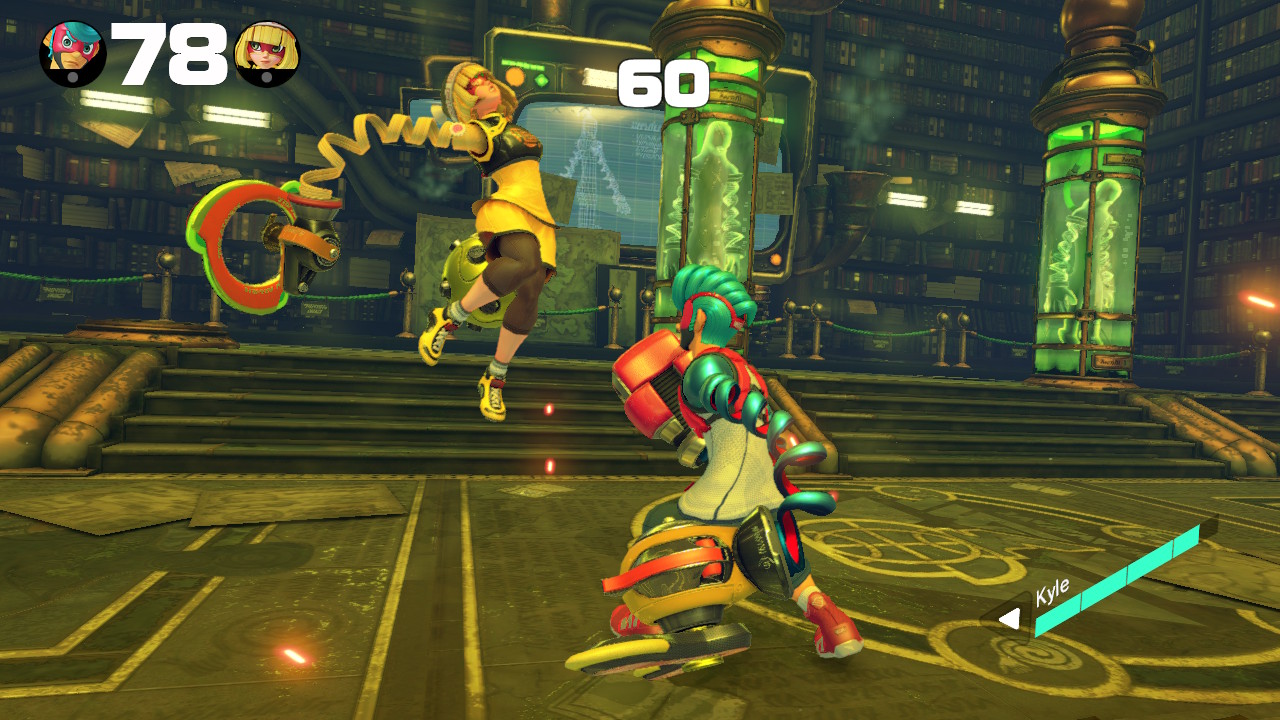






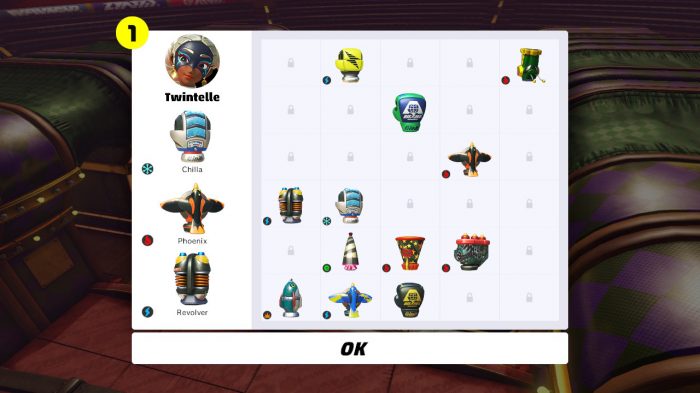




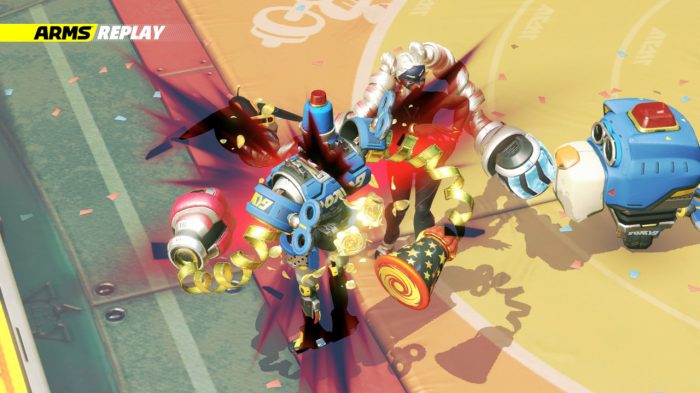
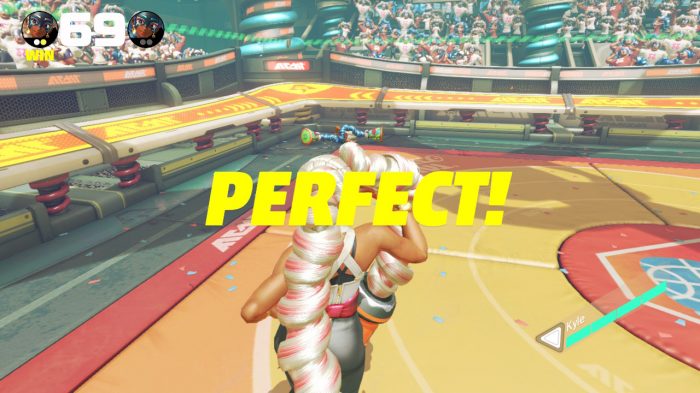


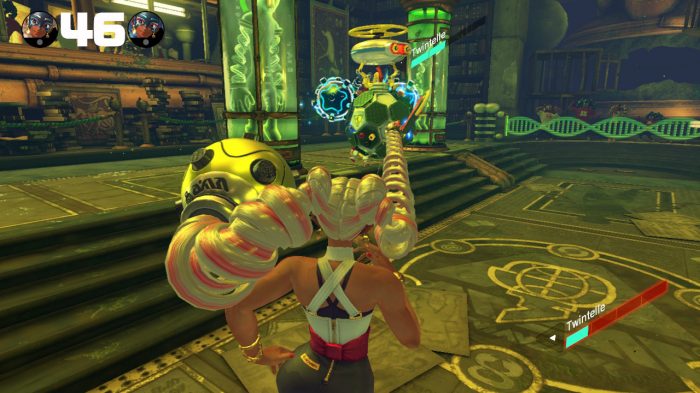

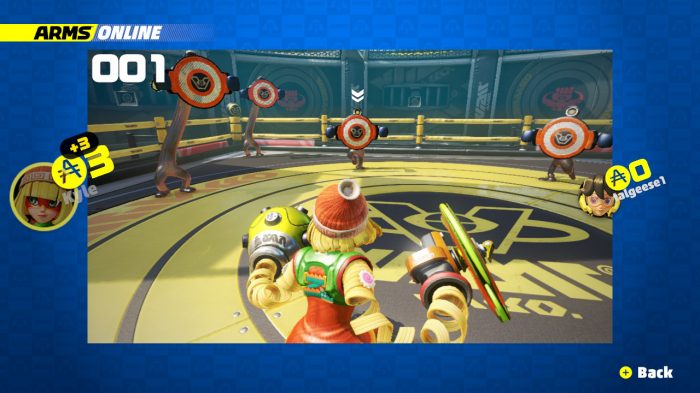



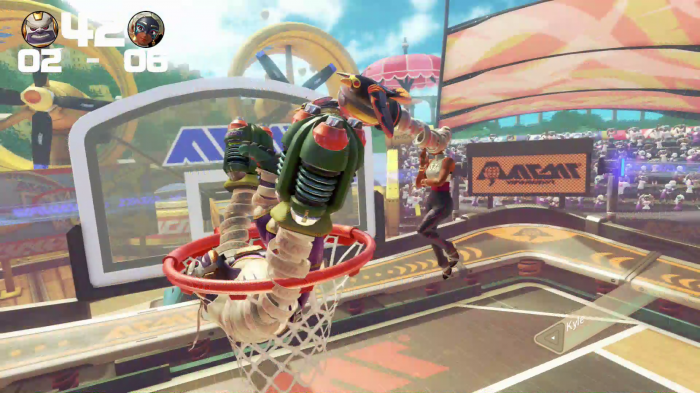

Great review! I’ll be keeping my eyes on this when I get my Switch next year.
Nice score! Glad you liked it so much, I really love the game too 🙂
For me the Test Punches made a big difference in picking it up, before that I was going to put my money on Disgaea 5, but I decided to hold off so I could get in on the ground floor.
The bots are hard, the party mode is fun, and Ranked is pretty solid 🙂